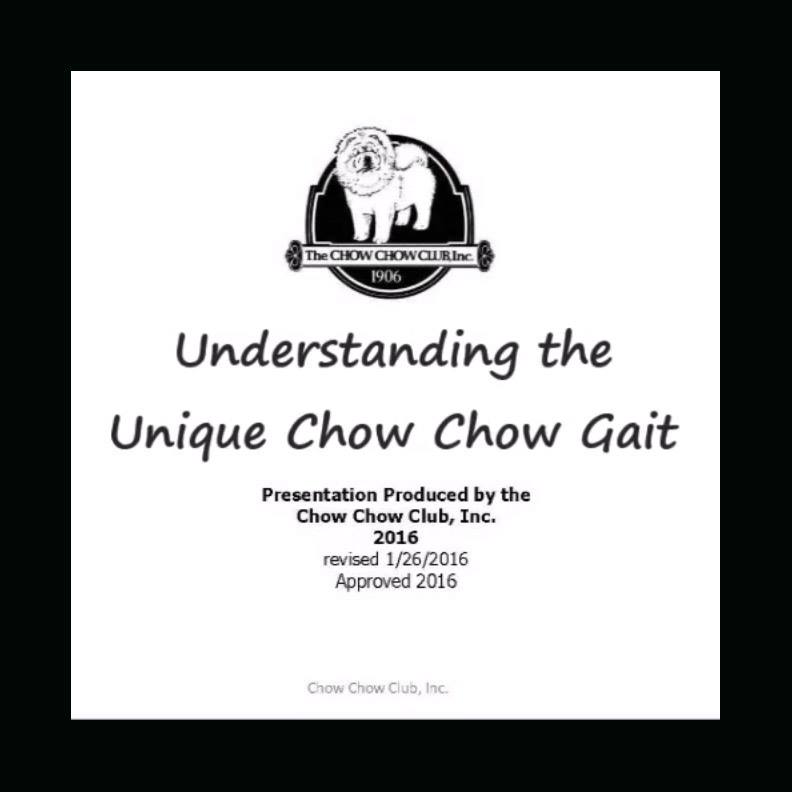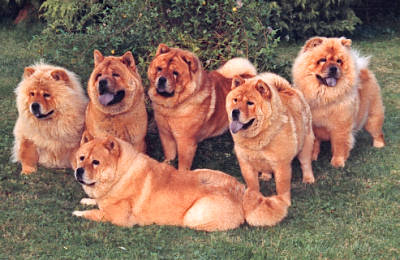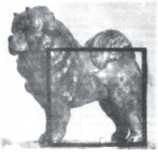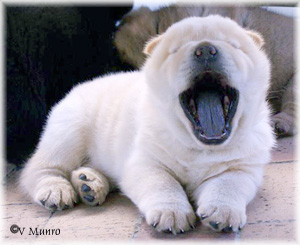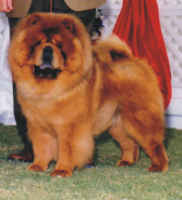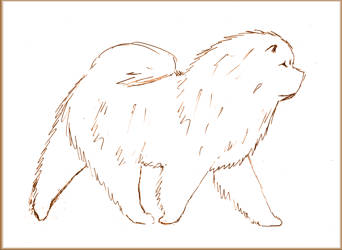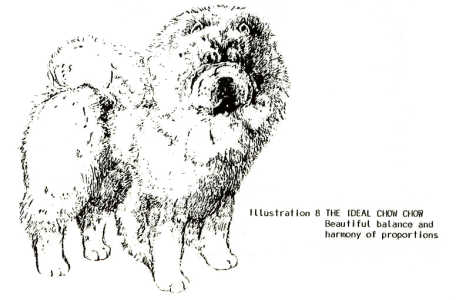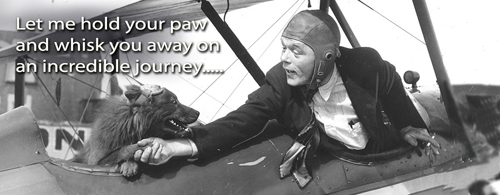Chow Chow Africa education
Best for the breed -
breeders And Judges Education
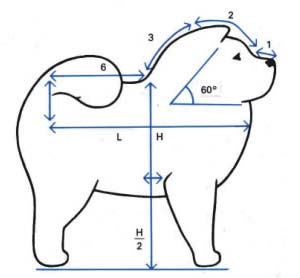
Judging of the Chow Chow.
by
Specialist Judge - Diana Phillips, Chanoyu Chow Chows, UK
A
bit of background on the author:
“Born into Chows”, she started seriously showing in
the late 1940’s, early 1950’s. Her judging career started
in 1963,
she has judged many Championship shows, including the prestigious
Crufts Show. She has judged CACIB shows from France all through
to Russia
and also a Championship Show in Canada. She is actively involved
in the training of Chow judges in the UK.
She has written the book, “A dog owner’s guide to the
Chow Chow” which is out of print now, but still available
on E-Bay.
She visited South Africa in the early 1980’s. Two of her bitches
were exported to South Africa - Chanoyu Kwan Yin - Open Bitch winner
at the
1979 Open Show as well as Chanoyu Princess Victoria - BOS at the
Chow Club’s first Open Show in 1979 with 58 Chows present.
1980 she topped it with BIS at the Open Show.
When dog judging first began, it became obvious that there must be some kind of framework upon which to make decisions. So, one by one, standards for the various breeds were drawn up, usually by the parent club of the breed. The first ever Chow standard was drawn up by the committee of the Chow Chow Club (UK) in 1895/6. Since then there have been revisions both to clarify the wording and also to improve any points relating to the health of the Chow. The FCI standard is based on the British one and was updated to match the current UK one in 1999. As both standards are written in terminology which applies to all breeds, it becomes important to be able to interpret much of the wording in the light of what is meant for the Chow. A standard is an agreed picture in words of an ideal specimen of the breed. The exact replica of the standard has never yet been born but we should all try to get as near it as possible.
The standard asks for an active dog. The Chow should be fit enough to move at a brisk pace and not amble along in the show ring. It is essential that the Chow is well-balanced. This should not be confused with size. It means that every part must be in proportion with every other part … e.g. the head neither too big nor too small, legs not too short nor too long, bone neither too slight nor too heavy. A balanced Chow fits roughly into squares... his head fits neatly into a square, he has a solid square front, the rear view is solid and square and the whole chow has the perfect balance of a square.
Proportions of the Chow:

L
= Length H = Height
L = H
Elbow to Ground = ½ H
1
= length of nose to stop
2 = length of stop to occiput ( 2 x 1)
3 = length of neck (3 x 1)
6 = length of back (6 x 1)
Neck carriage approx 60 degrees.
A Chow’s natural temperament is to be rather aloof & reserved with strangers but there should never be any aggression. The important thing for a judge to remember is to approach gently from the front with hand under the dog’s chin. Never approach from top, rear or side as the oriental slant of the eyes can affect vision from those angles. Correctly approached, the Chow should be amenable to strangers in the ring but he still remains choosy about making friends.
The head is very distinctive of the breed but the Chow is not just a “head only breed.” All must be in proportion to the whole dog. The skull should be flat & broad both from front to rear and from side to side with good width between the ears. The stop should be moderate, just enough to give parallel planes of brown and muzzle ... neither too deep like a bulldog, nor too little, producing a “down-face”.
A reasonable amount of padding or filling under the eyes but not too much helps with the scowling expression which must never be achieved by loose wrinkle anywhere on the head. The nose leather should be large & broad with open nostrils. Breathing should be easy, never loud or laboured. Red & black chows always have black nose leather but an allowance is made for cream where the range can be anything from pink to browny-mauve. Blues and fawns are allowed a self colour nose, the blue approximating to a slate colour with the fawn being a less dense black. The muzzle should be broad … here we have another square. There should be no narrowing & it should be well padded but not wrinkled. The depth of pigmentation is unique to the breed. The roof of the mouth & the lips black with a blue/black tongue & gums preferably black. Except for the small glands on the underside of the tongue, there must never be any pink in the mouth of a black Chow.
The dilute colours will carry less pigmentation on their gums and allowances can be made for puppies and veterans. In the deep self-red chow a dilution of pigment is undesirable. Severe dilution or spotting on the tongue should be penalised in all colours. A good mouth is like a coal-hole! The standard on teeth is self-explanatory. The UK standard on eyes was altered in 1991 for the health of the Chow. Oval means “egg-shaped” not round or bold. The eyes should be medium sized, not too small & not too close together. Over the years the words “deeply set” were often used. These words have never been in the British standard (they are in the American one) & it is most important for the health of the Chow that they should not be too deeply set … but then neither should they be too bold. Clean & dry is ideal but allowance must be made for some weather conditions (e.g. wind). The iris in reds & blacks should be dark, but blues and fawns can have a matching colour iris.
A judge should be able to see the eyes without any hand finger near them... no pulling about is needed if the eyes are healthy. Small, thick, stiffly carried but slightly forward tilted ears should be substantial to the touch and never thin or floppy. When viewed from thefront, the inside line of the ear should be in line with the outside corner of the eye. Due to the lack of ruff there is an optical illusion that the ears of a smooth Chow are large. Usually they are not. A chow has the ability to move his ears independently like a horse, which often results in “flying ears” in the ring. A quick attraction of attention will put them correct for the second the true set needs to be seen.
The neck provides the dog with head carriage and the required proud, dignified bearing. It must be in proportion to the size of the dog and be sufficient to carry the had above the topline when alert. The body of the Chow must be in proportion to the size of the dog. There should be a proportionate width between the forelegs with a reasonably developed but not exaggerated forechest. The rib-cage must be of good length to comfortably house the heart & lungs. The depth of rib-cage should be to the elbow line with a slight curve up to the couplings without a severe tuck up. The shortness & squareness of back must be achieved with good length of ribcage plus short couplings ... never shortness in rib-cage. When viewed from above the shoulders, the pelvis should be of similar width with no tapering in either direction. The spine should be straight & level. The root of the tail should be set high on a level croup. What is high? Not as high as a Pomeranian but higher than a Shar-Pei … all are called high, but a Chow is again moderate & between these two. Often a low set tail results in lifting on moving. The initial line of the tail should be along the spinal column but many tails curl to one side or even curl back on themselves and that is normal. Tailset.
The forequarters should have a reasonable but not exaggerated gap (approx. 2 fingers width) between the shoulder blades. The shoulders slope slightly outwards, downwards and forwards to the upper arm & elbows. Some books will tell you that there should be an angle of 55 degrees as opposed to the 45 degrees of other breeds … but we do not have a protractor in the ring!! The crucial measurement is that the shoulder bone and the upper arm should be of approximately equal length. If the measurement is incorrect, it will impair the front movement. An incorrect angle of the shoulders an also bring the withers too high up the neck and foreshorten the neck. The legs (lower arm) should be straight when viewed from front & side. Their length & substance should be in proportion to the rest of the chow. Over heavy bone is as much out of balance as lack of bone.
The hindquarters should give an impression of power with good muscle development & tone. The hocks should be vertical to the ground and from the hock joint to the feet it should be fairly short. When standing naturally the rear feet should be directly under the hips. When standing correctly, with strong pasterns, the feet should appear very small except for the toes which have a rounded depth not flatness. The feet should point straight ahead, neither toeing in nor out. Incorrect toeing is often due to compensation for incorrect elbows, pasterns, hocks or stifles. Splayed toes are often due to toenails not being worn or clipped down.
The short, stilted gait of the Chow is unique to the breed. There should be no apparent pinning (coming together of feet in varying degees) or paddling (swinging of one or both legs out from the vertical). Pinning is often caused by incorrect shoulder/upper arm proportion or elbows turning out to a greater or lesser degree. Sometimes pinning is confused with centreing, which is necessary to retain balance when moving at a faster pace. Often people think that a black Chow pins more than a red, but that is an optical illusion. Circling of front legs is often due to incorrect shoulder to upper arm ratio. The distinctive rear movement should seem to be as near a pendulum swing as possible with the hocks moving parallel to each other and with very little lift.
The Chow’s coat is a great contributor to it’s beauty. The standard describes it well except for the meaning of “profuse, abundant”. Profuse does mean there is a lot of it but not to exaggeration. Coat can be too long, too profuse and too abundant and out of all proportion to the balance of the dog. The more important word is “dense” … without the density and the all-important undercoat it will be an unbalanced collie-like coat. Thickness, texture & condition are more important than length. The smooth coated Chow (I personally prefer the Dutch terminology of “short-coated Chow” as the coat is stand-off not smooth!!) must have the same dense undercoat but not the length and there should be no featherings or long hairs on tail or breechings. Having said that, there is no excuse for getting out the scissors!!! Artificial shortening of the coat is not allowed & should be severely penalised. A judge should be able to tell not only be the look but also by the feel if this has been done. Customarily it has always been acceptable that the feet may be “tidied up” & wispy bits around the head may be tidied by plucking with fingers and thumb, but that is all. Trying to hide a low tail set or an imbalance of short legs is a No No! Judges should penalize heavily any trimming to deceive the natural body shape.
The allowable colours are clearly stated. The lighter breechings on blacks & blues are usually called “silver shadings”. Muzzles & ears are often of a deeper shade especially in creams. Chocolate is not an acceptable colour. On blacks & blues, some brown (”rusting”) occurs during summer and moulting and is no worse than the change of colour which occurs less noticeably in the other colours… but severe rusting all over is not desireable.
Judging the size of the dog by eye can be very deceptive. A really well balanced dog will often present the optical illusionof looking smaller than he is. If you are going to judge it is helpful to find some point of reference on your own leg.
When judging puppies you must make some allowances. The coat is usually woollier & softer, the pigmentation not yet fully there (often pinker gums … but not on blacks!), the height & balance may not yet have settled itself, (some pups are lower to ground & will often come up on the leg with age) and movement can be looser in pups due to muscle & tendon development. An allowance for veterans must be in direct proportion to age. Gradually pigment may start to fade particularly in dilute colours, teeth may be misaligned or missing and pasterns not as strong. There is also a possibility in bitches of a “spayed coat” which is longer & of different texture.
When judging with the standard in mind it can only be too easy to“fault judge”. This should not be so. Whilst remembering that there can, and will, be diversion from the ideal stated in the standard, the judge should be always looking for & remembering the many positive points each chow will have. First look at the complete picture of the Chow, then the positive component parts and then, finally, put this positive picture back together as a complete Chow. The overall picture is the primary consideration remembering always the words “square”, "moderate” and that no exaggeration at the expense of health, balance or soundness is acceptable.
Judges and breeders both contribute to the type & style of Chow and both bear great responsibility for the future of the breed. The recently added faults clause concerning “it’s effect upon the health and welfare of the dog” shows how much we have to take notice of health issues. Judges, when interpreting the standard, should be looking for… health … not obviously suffering from health problems, type … including general appearance & harmony of all parts with reference to breed specifics soundness … including movement.
Both the UK & the USA have found it helpful to both breeders & judges to produce their own Extended & Illustrated Breed Standards explaining in words & drawings the meaning of the breed standard issued by their Kennel Clubs. I hope this article may be the inspiration for your club to do the same for South Africa.
Wanting to publish these articles or link to them?
Some authors have given permission for these articles to be printed out for private free use internationally, both in national judges' training schemes and for private free education of individuals. However, all articles remain COPYRIGHT of the authors and no copies of these articles may be published in any way without written permission from the authors. For permission please contact the authors directly or please contact the webmaster.
On
the web, it will be appropriate to LINK to the articles which
originally appear on this website.
Acknowledgement of the articles' original appearance on this website
is appropriate and appreciated.
Breed Standards:
More Judging Articles:
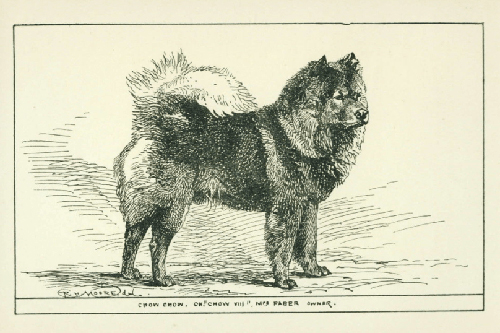 Learn more about the Chow Chow upon which the Breed standard is said to have been based.
Learn more about the Chow Chow upon which the Breed standard is said to have been based.
Learn about the Chow Chow's rich history on the Chow Chow Archives. This will help you understand the need for functional structure and moderate type.
